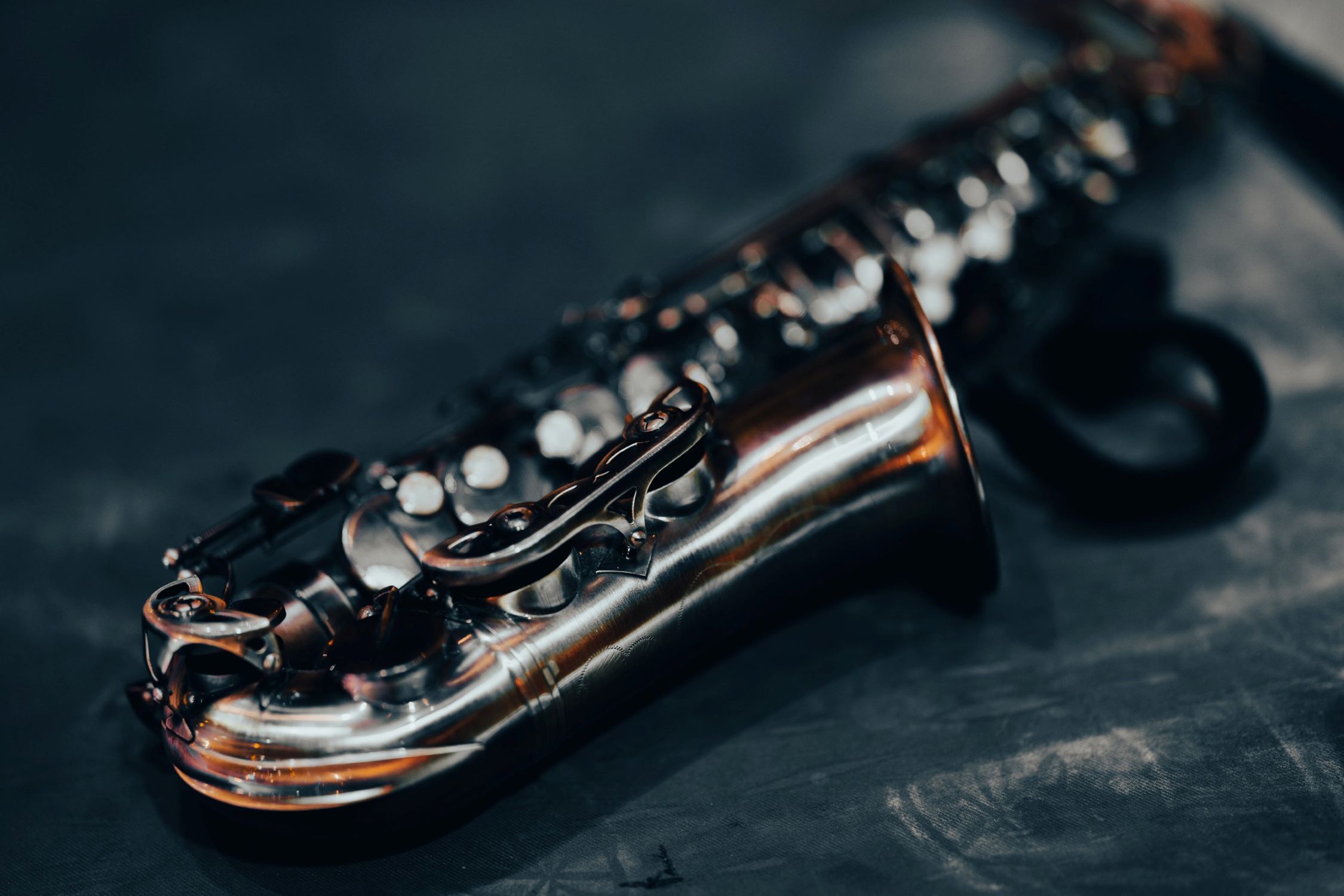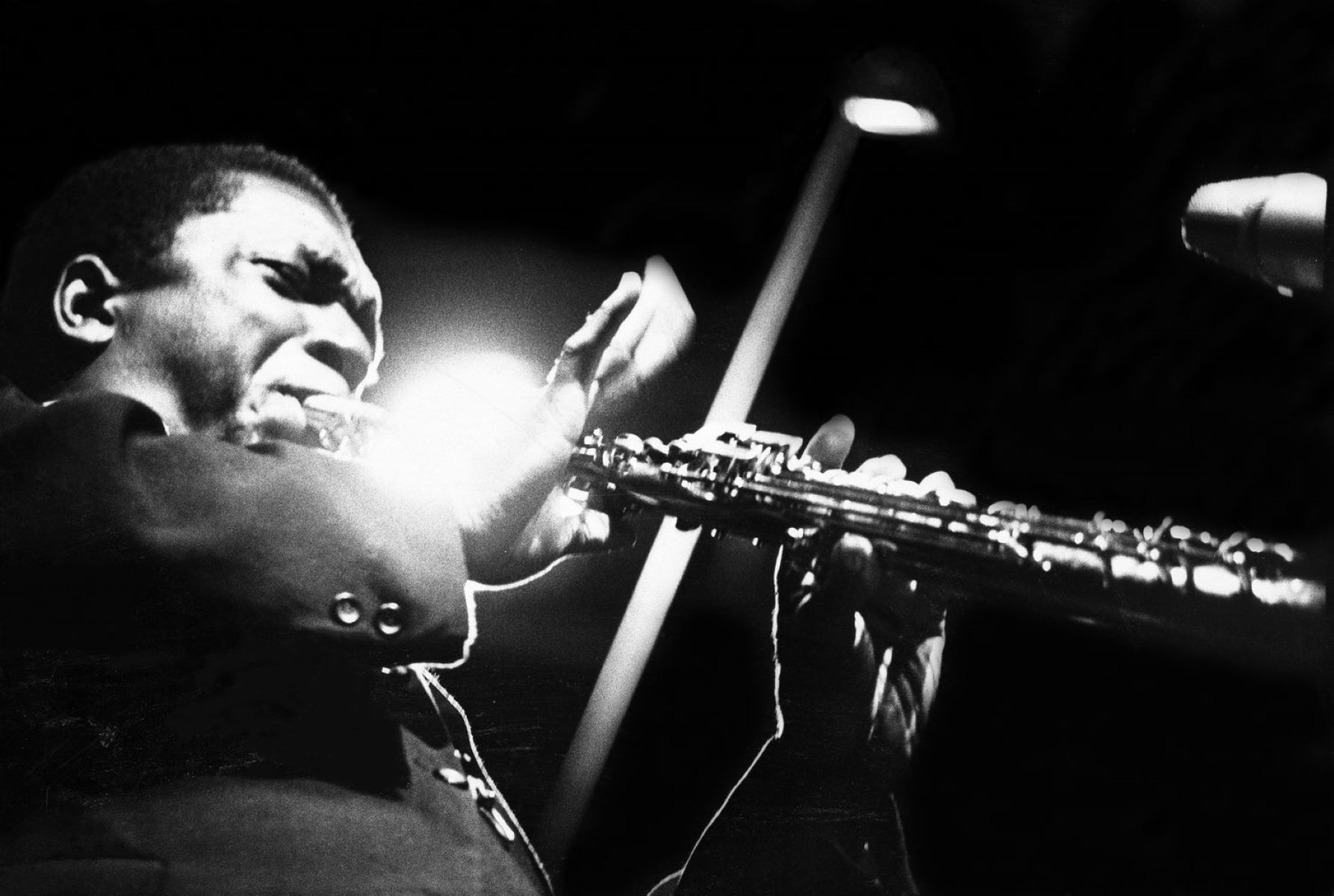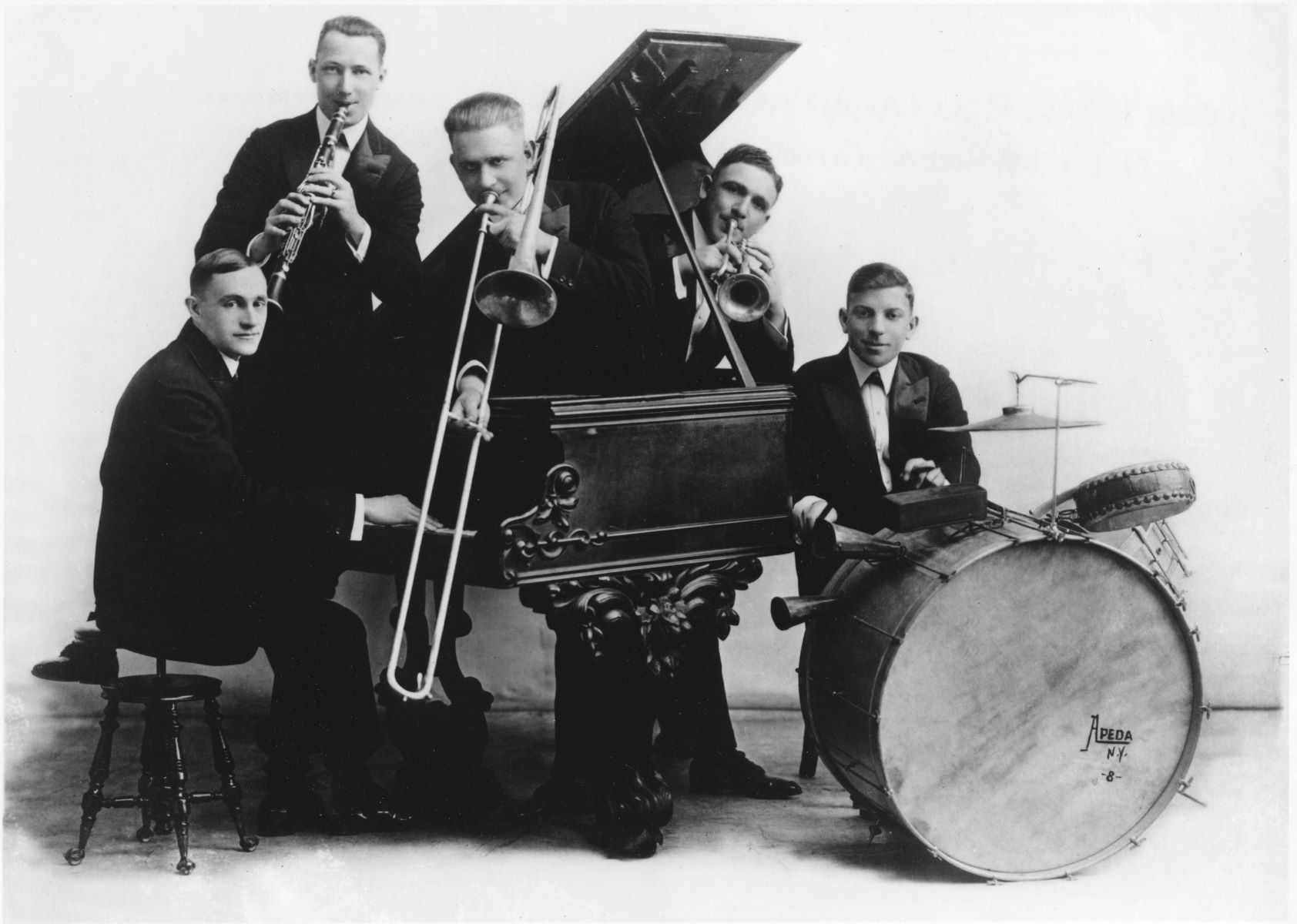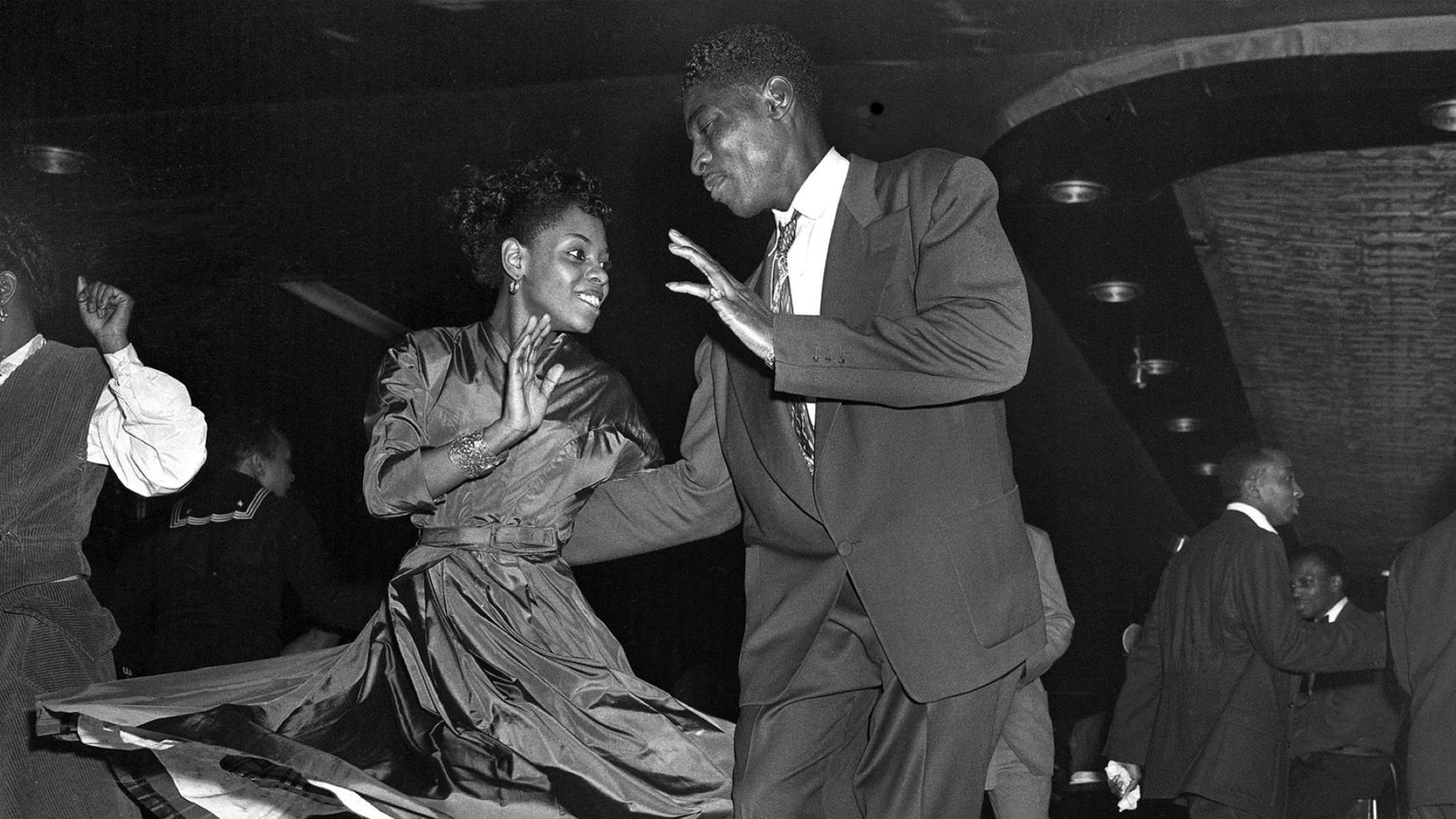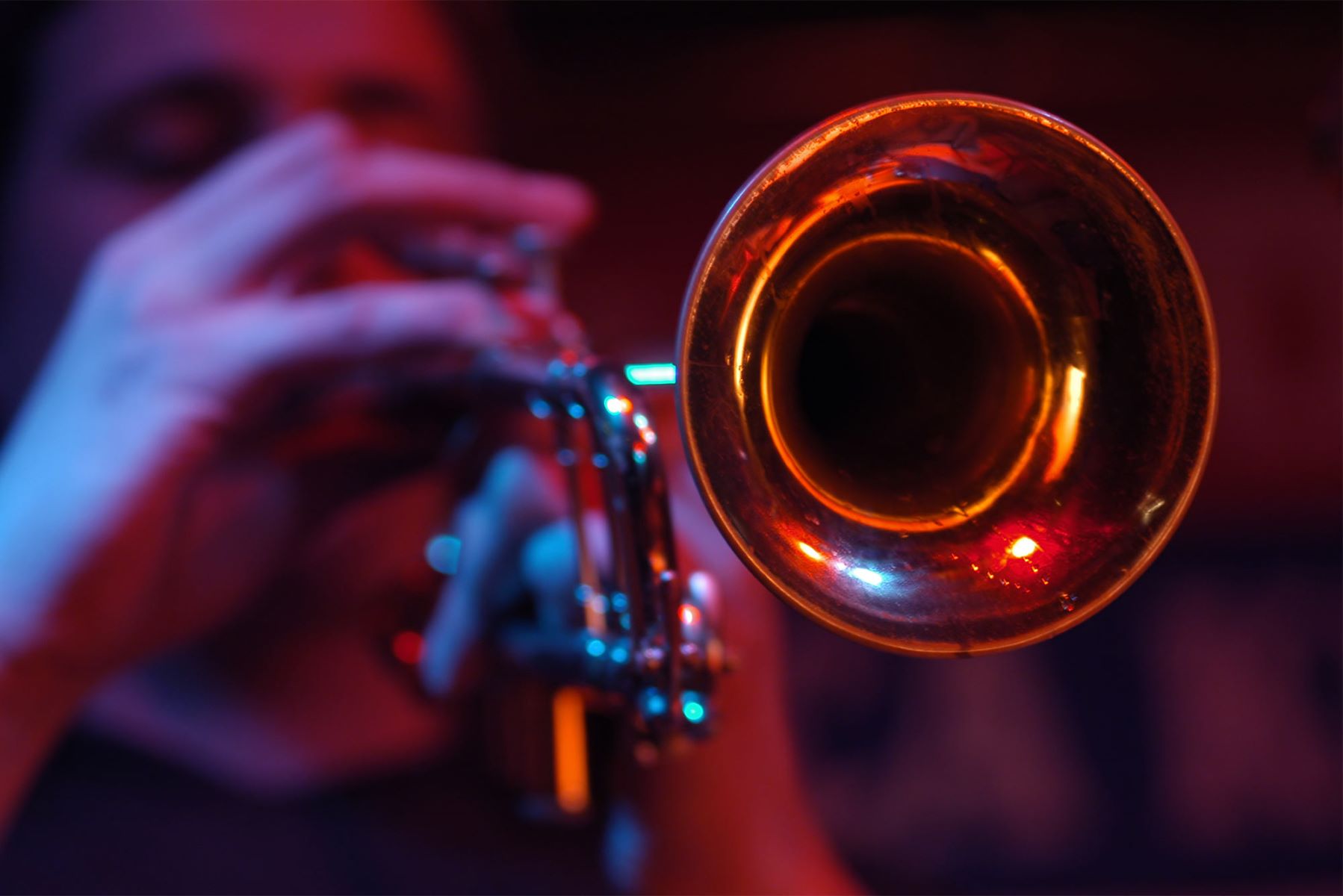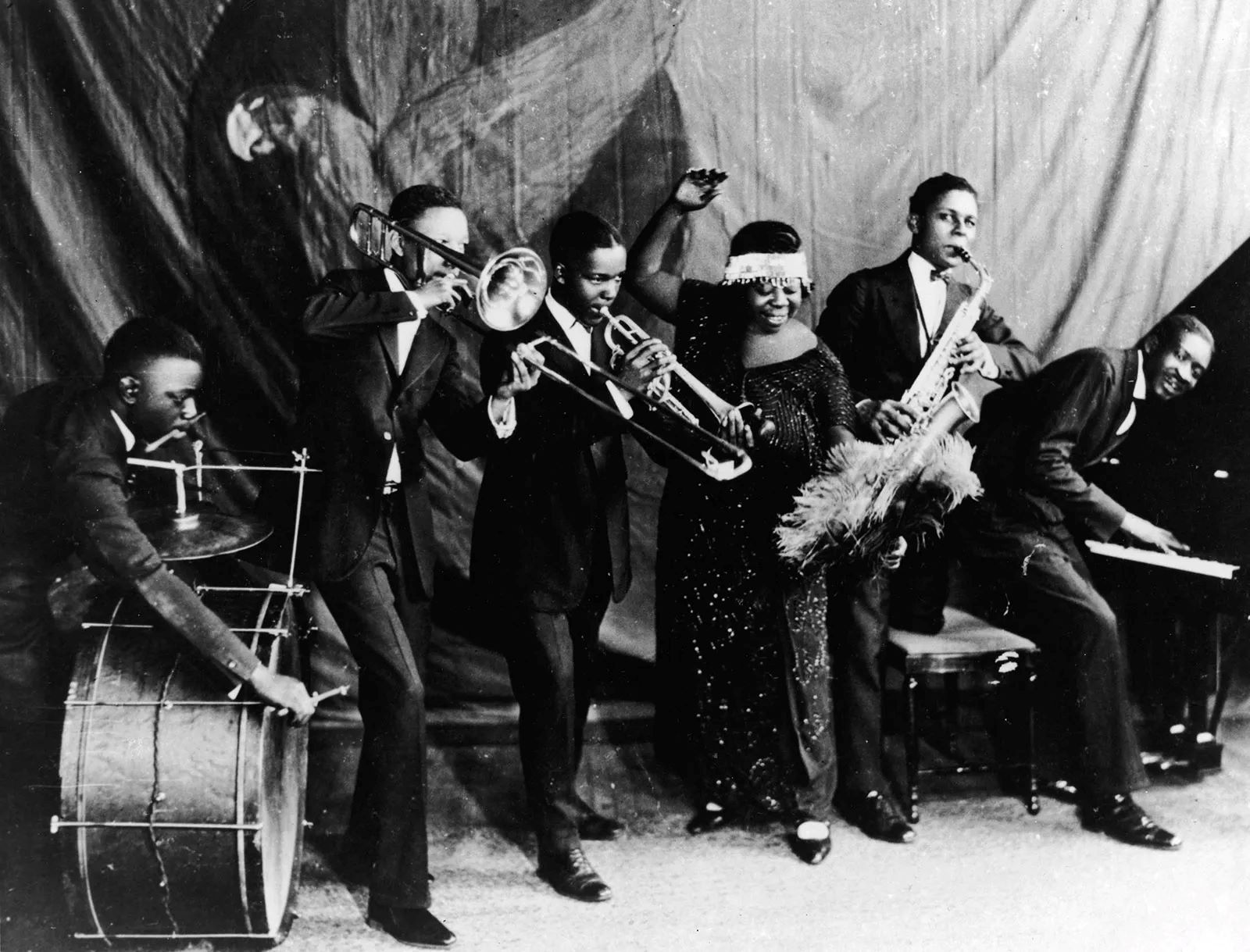

Jazz
How Did Jazz Impact The 1920S
Modified: February 18, 2024
Explore the profound influence of Jazz on the cultural landscape of the 1920s, as this captivating genre revolutionized music, dance, and social norms.
(Many of the links in this article redirect to a specific reviewed product. Your purchase of these products through affiliate links helps to generate commission for AudioLover.com, at no extra cost. Learn more)
Table of Contents
Introduction
Jazz is a genre of music that emerged in the early 20th century, primarily in African American communities in the United States. It is a unique and distinct art form that combines elements of European harmony and African rhythms. Known for its improvisation and syncopation, jazz has captivated listeners and musicians alike for over a century.
The 1920s, often referred to as the “Roaring Twenties” or the “Jazz Age,” marked a significant turning point for jazz. It was during this time that the genre gained widespread popularity and became a symbol of the social and cultural revolution happening in America. From the smoky clubs of New Orleans to the bustling streets of New York City, jazz became the soundtrack of a generation.
In this article, we will explore how jazz impacted the 1920s, examining its origins, rise to prominence, and its influence on African American culture, popular music, and society at large.
Jazz Origins
The origins of jazz can be traced back to the late 19th and early 20th centuries in the African American communities of New Orleans, Louisiana. It emerged as a fusion of various musical traditions, including the blues, ragtime, spirituals, and the creole music of Louisiana. Jazz was born out of the cultural melting pot that was New Orleans, where African, European, and Caribbean influences converged.
One of the key figures in the development of jazz was Louis Armstrong, a trumpeter from New Orleans who became a defining voice of the genre. Known for his virtuosic playing and improvisation skills, Armstrong revolutionized the art of jazz and popularized the use of improvisation as a core element of the music.
Jazz also drew inspiration from the syncopated rhythms of African music and the harmonic structures of European classical music. This fusion created a unique musical language that allowed for individual expression and creativity, paving the way for the improvisational nature of jazz.
It is important to acknowledge the significant role African American musicians played in shaping jazz. Due to segregation and racial inequality at the time, jazz initially thrived in African American communities and venues such as Storyville, the red-light district of New Orleans, where musicians would gather to jam and entertain patrons.
As jazz gained popularity, it began to spread beyond New Orleans and make its way to other parts of the United States. Musicians like Duke Ellington and Count Basie brought jazz to cities such as Chicago and Kansas City, contributing to its evolution and influencing a new generation of musicians.
Overall, the origins of jazz can be attributed to the rich and diverse musical heritage of African Americans, the cultural fusion in New Orleans, and the creativity and innovation of individual musicians. These early developments set the stage for the transformative impact that jazz would have in the 1920s.
The Rise of Jazz in the 1920s
The 1920s marked a turning point for jazz, as it gained immense popularity and began to shape the cultural landscape of America. The decade, often referred to as the “Roaring Twenties” or the “Jazz Age,” was characterized by a vibrant and exuberant atmosphere, and jazz became the soundtrack of this cultural revolution.
Jazz music flourished in the speakeasies and underground clubs of major cities such as New Orleans, Chicago, and New York City during the Prohibition era. The banning of alcohol led to the proliferation of illegal bars, known as speakeasies, where jazz bands played to enthusiastic audiences. These venues became hotbeds of creativity, where musicians pushed the boundaries of the genre through improvisation and experimentation.
One of the key factors contributing to the rise of jazz was the development and widespread availability of recording and broadcasting technologies. This allowed jazz music to reach a broader audience, and jazz recordings became bestsellers. Artists like Louis Armstrong, Duke Ellington, and Bessie Smith became household names, and their records flew off the shelves.
Jazz also gained recognition through radio broadcasts, which helped spread the sound of jazz across the nation. Radio programs such as “The Cotton Club” and “The Savoy Ballroom” showcased live performances by renowned jazz musicians, exposing listeners to the vibrant energy and infectious rhythms of the music.
The popularity of jazz was not limited to the African American community. White audiences were also drawn to the infectious beats and lively melodies of jazz, and 1920s became a time of racial integration through music. Jazz clubs and venues started to break down racial barriers, welcoming both black and white patrons to enjoy the music together.
The rise of jazz in the 1920s also coincided with the advent of the Harlem Renaissance, an intellectual and cultural movement centered in the African American neighborhood of Harlem, New York City. Jazz became an integral part of this cultural movement, as it expressed the social and cultural experiences of African Americans during this time of societal transformation.
The popularity of jazz in the 1920s can be attributed to its infectious energy, its ability to captivate audiences with its improvisation, and its role in breaking down racial barriers. It paved the way for future developments in popular music and had a lasting impact on American culture.
Impact on African American Culture
Jazz had a profound impact on African American culture during the 1920s. It provided a platform for self-expression, solidarity, and empowerment for a community that had long been marginalized and oppressed.
Through jazz music, African Americans found a way to celebrate their cultural heritage and express their joys, sorrows, and struggles. The improvisational nature of jazz allowed for individual expression, and African American musicians used it as a means of asserting their identity and reclaiming their voice in a society that sought to silence them.
Moreover, jazz became an integral part of the Harlem Renaissance, a cultural and intellectual movement that celebrated African American art, music, and literature. Jazz music was showcased in the vibrant clubs and music halls of Harlem, providing a platform for African American musicians to gain recognition and exposure.
Jazz also challenged the prevailing stereotypes that were associated with African Americans at the time. Through their virtuosic playing and improvisation skills, musicians like Louis Armstrong and Duke Ellington showcased the talent and creativity of African American artists, proving that they were equals in the world of music.
Furthermore, jazz became a form of resistance and protest against racial inequality and discrimination. It served as a symbol of cultural pride and resilience, allowing African Americans to assert their presence and demand social change. The lyrics of jazz songs often reflected the experiences of African Americans, addressing themes of prejudice, inequality, and the struggle for freedom.
The impact of jazz on African American culture extended beyond music itself. The style and fashion associated with jazz, such as vibrant clothing, bold hairstyles, and flamboyant accessories, became statements of identity and rebellion. Jazz clubs and venues also provided a space for African Americans to socialize, connect, and build communities, fostering a sense of belonging in a racially divided society.
The influence of jazz on African American culture in the 1920s cannot be overstated. It empowered a community, challenged stereotypes, and provided a platform for cultural expression and activism. Jazz continues to be a vital part of African American heritage and serves as a reminder of the resilience and creativity of a marginalized community that found power through music.
Influence on Popular Music
The impact of jazz on popular music during the 1920s was profound and far-reaching. Jazz revolutionized the way music was both created and consumed, leaving an indelible mark on the evolution of popular music in America and beyond.
One of the key ways in which jazz influenced popular music was through its rhythmic innovations. The syncopated and swinging rhythms of jazz became ingrained in the fabric of popular music, transcending genre boundaries. Musicians in various genres, including blues, rock and roll, and later, hip-hop, drew inspiration from jazz rhythms, injecting a sense of liveliness and urgency into their music.
Jazz also popularized the concept of improvisation in popular music. The ability to spontaneously create melodies and solos on the spot became a defining characteristic of jazz, and other genres began incorporating elements of improvisation into their performances. This brought a new level of creativity and spontaneity to popular music, allowing musicians to break free from rigid structures and create on the fly.
Furthermore, the instrumentation and arrangement techniques in jazz had a profound influence on popular music. Jazz ensembles, often consisting of a rhythm section, brass instruments, and woodwinds, introduced new sounds and textures that were unheard of in traditional popular music. Swing bands, in particular, with their big brass sections and intricate arrangements, became popular and set the stage for the big band era of the 1930s and 1940s.
The harmonic language of jazz also found its way into popular music. Jazz introduced new chord progressions and tonalities, expanding the melodic and harmonic possibilities in popular songs. The use of extended chords and altered harmonies in jazz compositions influenced songwriters in diverse genres, including pop, R&B, and even classical music.
Jazz’s influence on popular music extended beyond the technical aspects. The spirit of innovation, freedom, and self-expression that defined jazz resonated with musicians across genres. Jazz musicians like Louis Armstrong and Ella Fitzgerald became icons whose influence stretched far beyond jazz circles, inspiring artists in the realms of pop, soul, and beyond.
The legacy of jazz as a genre can still be felt in popular music today. Many contemporary artists continue to incorporate jazz elements into their music, embracing its spirit of improvisation, and paying homage to its rich history. Jazz provided the blueprint for modern popular music, shaping the way we approach rhythm, harmony, and creative expression in music.
Jazz and Social Change
Jazz had a significant impact on social change during the 1920s. It served as a powerful force in breaking down racial barriers, challenging societal norms, and promoting cultural integration.
One of the ways in which jazz contributed to social change was through its role in racial integration. Jazz clubs and venues became spaces where black and white musicians performed side by side, and audiences of all races came together to enjoy the music. This was a notable departure from the racially segregated society of the time, and jazz played a vital role in promoting cultural exchange and understanding.
Jazz also played a role in challenging and confronting racial prejudice and stereotypes. Through their performances and musical virtuosity, black jazz musicians defied the prevailing racist narratives of the time. Their talent and creativity showcased the richness and depth of African American culture, forcing society to reevaluate preconceived notions about race and talent.
Furthermore, jazz provided a platform for social commentary and political expression. Musicians often used their lyrics or improvisations to address the issues of the day, including racial inequality, poverty, and the struggle for civil rights. The music became a means of communicating shared experiences and voicing the aspirations for a more just and equal society.
Jazz also played a part in breaking gender barriers. Women like Ella Fitzgerald and Billie Holiday emerged as prominent jazz vocalists, challenging traditional gender roles and paving the way for female musicians in the decades to come. Their success in the jazz world demonstrated that women could be powerful and influential figures in music, inspiring countless female musicians across genres.
Additionally, jazz provided economic opportunities for African Americans during a time of economic hardship. The demand for jazz musicians in clubs and speakeasies created employment opportunities for black artists, allowing them to support themselves and their families. This economic empowerment had a ripple effect, contributing to the overall economic progress of African American communities.
Overall, jazz was a catalyst for social change. It helped bridge racial divides, challenged stereotypes, and provided a platform for marginalized voices to be heard. Its influence reached beyond the realm of music, contributing to the broader movements for civil rights, gender equality, and cultural integration.
Jazz in Prohibition-Era America
The era of Prohibition in the United States, which lasted from 1920 to 1933, had a profound impact on jazz and its place in American society. The ban on the production, sale, and distribution of alcohol led to the rise of underground speakeasies, where illegal alcohol was served and jazz music thrived.
Speakeasies became the social hubs of the time, where people gathered to drink, dance, and enjoy live entertainment. Jazz bands, with their infectious rhythms and energetic performances, were a perfect fit for these clandestine venues. Jazz music provided an escape from the constraints of the Prohibition era, offering a sense of rebellion, excitement, and freedom.
The vibrant atmosphere of speakeasies created a demand for jazz musicians and generated numerous opportunities for them to perform. Musicians honed their skills by playing in these establishments, adapting their style to suit the lively and energetic atmosphere. Speakeasies became the breeding ground for jazz innovation and experimentation.
During this time, jazz music underwent a transformation as it blended with other forms of popular music. Jazz became more accessible to a wider audience, blending with genres such as ragtime, blues, and popular dance music. This fusion created a new sound that resonated with people from all walks of life, contributing to the genre’s popularity and reach.
Black jazz musicians, who were often marginalized in mainstream society, found a welcoming and accepting audience in the speakeasies. Black and white audiences mingled and danced together, breaking down racial barriers and promoting cultural integration.
Prohibition-era America also witnessed the rise of iconic jazz figures who gained national recognition during this time. Musicians like Louis Armstrong, Duke Ellington, and Bessie Smith became celebrated artists, catapulting jazz music into the mainstream and solidifying its place in American culture.
Moreover, the popularity of jazz in speakeasies contributed to the growth of the recording industry. Record labels recognized the commercial potential of jazz music and started signing jazz artists, releasing their music on records. This allowed jazz to reach an even wider audience and cemented its status as a popular and influential genre.
The end of Prohibition in 1933 brought about a decline in the speakeasies, but the impact of jazz during this era was long-lasting. It had not only transformed the music scene but had also contributed to social change, racial integration, and the empowerment of marginalized communities.
Jazz in Prohibition-era America represents a cultural revolution, where a genre of music became a symbol of rebellion, freedom, and artistic expression. It remains a testament to the resilience and creativity of musicians who harnessed its power to challenge societal norms and shape the course of American music history.
Jazz and the Harlem Renaissance
The Harlem Renaissance, a cultural and intellectual movement that took place in the 1920s in the neighborhood of Harlem, New York City, had a profound relationship with jazz. Jazz music became an integral part of this artistic and literary movement, representing the spirit of African American culture and contributing to its overall renaissance.
During the Harlem Renaissance, jazz clubs and speakeasies became vibrant cultural hubs where artists, writers, and musicians converged. This creative exchange fostered collaboration and innovation, as jazz musicians interacted with poets, painters, and intellectuals, resulting in a cross-pollination of ideas and artistic expressions.
Jazz provided the soundtrack for the Harlem Renaissance, capturing the energy and vibrancy of the era. The music reflected the experiences of African Americans in a rapidly changing society, expressing their joys, frustrations, and aspirations. From the smoky clubs of Harlem to the social gatherings in private homes, jazz reverberated through the streets, becoming the voice of a generation.
Central to the Harlem Renaissance were the jazz clubs that hosted performances by legendary musicians such as Duke Ellington, Count Basie, and Chick Webb. The Cotton Club and the Savoy Ballroom were iconic venues where jazz bands played to packed audiences, both black and white. These clubs not only showcased the talent and creativity of African American musicians but also served as spaces where racial barriers were challenged and broken down.
Jazz, with its infusion of European harmonies and African rhythms, epitomized the cultural fusion at the heart of the Harlem Renaissance. The syncopated rhythms and improvisation in jazz resonated with the experimental spirit of the movement, as artists sought to break free from the artistic conventions of the past. Jazz became a symbol of African American creativity and resilience, providing a platform for self-expression and cultural affirmation.
Moreover, jazz figures such as Louis Armstrong, Bessie Smith, and Ella Fitzgerald emerged as prominent figures during the Harlem Renaissance, both on the stage and in recordings. Their success and artistic achievements challenged the prevailing notions of race and paved the way for future African American musicians to achieve recognition and acclaim.
The impact of jazz on the Harlem Renaissance extended beyond the music itself. Jazz influenced the literature of the time, with writers incorporating jazz rhythms and themes into their works. Artists like Langston Hughes and Zora Neale Hurston drew inspiration from the improvisational and expressive nature of jazz, infusing their writing with the syncopation and spontaneity found in the music.
The relationship between jazz and the Harlem Renaissance was reciprocal. Jazz provided a dynamic and captivating form of artistic expression, while the movement provided a platform for jazz to thrive and gain recognition. Together, they redefined the cultural identity of African Americans, challenging stereotypes and nurturing a sense of pride and empowerment.
The legacy of jazz in the Harlem Renaissance endures to this day, serving as a testament to the creativity and resilience of African American artists during a transformative period in American history. It remains a vivid reminder of the power of art to shape society and inspire change.
Controversies and Criticisms
Despite the widespread popularity and influence of jazz in the 1920s, it was not immune to controversies and criticisms. As with any artistic movement, jazz faced its fair share of detractors and societal backlash, often driven by racial prejudice, moral concerns, and misconceptions about the genre.
One of the main criticisms leveled against jazz was its association with vice and immorality. Due to its close ties to speakeasies and the underground culture of the Prohibition era, jazz was seen by some as a corrupting influence on society. Critics argued that the raucous and sensual nature of the music could incite unruly behavior and moral decay.
Jazz’s ties to African American culture also fueled racial prejudices and biases during this time. As jazz gained popularity among both black and white audiences, it sparked fear and resentment among some segments of society. African American musicians, particularly those who achieved commercial success, faced criticism and discrimination, with their music being dismissed or ridiculed as inferior or vulgar.
Moreover, jazz was criticized for its subversion of traditional musical conventions. Some conservative musicians and critics viewed jazz as a threat to established musical forms, arguing that its emphasis on improvisation and syncopated rhythms deviated from the principles of classical music. Jazz was seen as a rebellious and uncontrollable force that challenged the norms of musical composition and performance.
Furthermore, jazz faced accusations of cultural appropriation. Some critics argued that white musicians who adopted jazz and popularized it among mainstream audiences were profiting off African American artistry without adequately acknowledging or respecting its origins. This appropriation of African American culture raised questions of authenticity and equity within the music industry.
It is important to note that these controversies and criticisms reflect the social context of the time and the deep-seated racial prejudices of the era. Despite the challenges faced by jazz, the genre prevailed, evolving and adapting to overcome these obstacles. Jazz continued to captivate audiences with its innovative spirit and undeniable talent, ultimately solidifying its place in the pantheon of American music.
While criticisms of jazz in the 1920s were significant, they could not overshadow the profound impact that the genre had on music, culture, and society. Jazz revolutionized the way music was created and perceived, breaking down racial barriers, and serving as a symbol of artistic freedom and expression. Its lasting legacy is a testament to the resilience and cultural power of this unique art form.
Conclusion
The 1920s was a transformative decade for jazz, as the genre rose to prominence and left an indelible mark on American culture. Jazz transformed the music scene, revolutionized popular music, and became a symbol of social change and cultural integration.
Originating in African American communities, jazz emerged as a fusion of various musical traditions, blending the rhythms of African music with the harmonic structures of European classical music. Its improvisational nature and infectious energy captivated audiences and provided a platform for self-expression.
Jazz had a profound impact on African American culture, empowering the community and challenging racial stereotypes. It became an integral part of the Harlem Renaissance, serving as a voice for social commentary and political expression. Jazz also played a role in breaking down racial barriers, promoting cultural integration, and empowering marginalized communities.
The influence of jazz extended far beyond its musical innovations. Jazz shaped the development of popular music, introducing syncopated rhythms, improvisation, and new harmonic possibilities. It inspired artists from various genres, fostering creativity and innovation.
While jazz faced controversies and criticisms, including accusations of immorality, racial prejudice, and cultural appropriation, it persevered and continued to thrive. The enduring legacy of jazz is a testament to its power as an art form and its ability to transcend social and cultural divides.
The impact of jazz in the 1920s laid the foundation for the future of American music. Its spirit of innovation, freedom, and expression continues to resonate in contemporary music. Jazz is a testament to the resilience and creativity of African American musicians and serves as a reminder of the power of music to inspire change and shape society.
As we look back on the 1920s and the influence of jazz, we must recognize the cultural significance of this genre. Jazz represents a cultural revolution, an artistic movement that challenged societal norms, broke down racial barriers, and fostered unity through music. Its impact on American history and culture cannot be overstated, as it continues to inspire and captivate audiences around the world.

